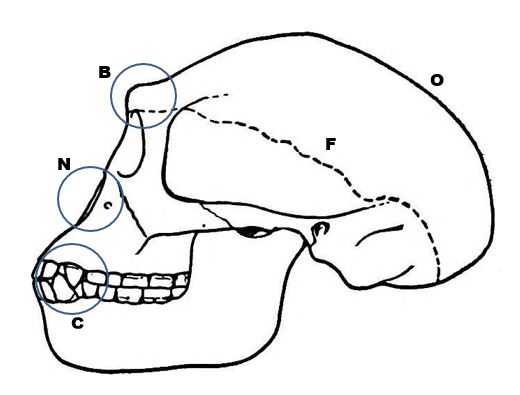Originally posted 8/28/17 on TheEvolutionOfHuman.com, the precursor to HLGTW.com
In the 2010’s, science seems to produce miracles every day. We are constantly enthralled by ever-changing smart phones and life-saving medicines. Yet one of this decade’s most important science stories is something that didn’t have much media reach – the direct detection of gravitational waves. This post will explain what gravitational waves are, how they were recently detected, and what this means for the sake of science.
What are gravitational waves?
A boat sitting on a lake displaces (pushes aside) some of the water. As the boat moves, the displacement of water follows it. The disturbance in the water then propagates outward from the boat in waves. Physicists predicted a century ago that gravity can behave in a similar way. A massive body like a star warps space-time, especially in its vicinity. When the star is disturbed in certain ways, the space-time warp radiates outward from the star in gravitational waves, carrying energy with it. If the star is massive enough and particularly agitated, the waves could even be detected from Earth.
How do we know this?
Our best understanding of gravity today is Einstein’s general theory of relativity (GR). His theory gave physicists much to think about, as it was a degree more refined and explanatory than Newton’s 17th century model of “action at a distance”. When Einstein published this theory in 1915, however, it was mostly theoretical. It made good sense to those (few) who understood it, and it went a long way toward explaining how the universe works on a large scale. Believers were eager to see if relativity were really supported by astronomical observations. There were a few early corroborations. GR immediately explained anomalies in Mercury’s orbit that made no sense otherwise. Astronomers knew that if Einstein were right about gravity as the warping of space-time, light rays from distant stars should be bent as they passed near the sun, slightly shifting the stars’ locations in the sky. That can only be observed during a total solar eclipse. The opportunity came in 1919, and during that eclipse stars near the sun did in fact appear slightly offset from their true positions. Since then, distant galaxies have been observed acting as “gravitational lenses”, making galaxies directly behind them appear as rings of light rather than points!
Einstein was not perfect. His model of GR was based on the assumption that the large-scale universe was static. When it became clear that the universe is actually expanding, he had to modify his equations to suit observational reality. Thus, even the best ideas from the smartest people cannot be taken as gospel. They have to be borne out by reality.
Over the decades, all of Einstein’s predictions were directly confirmed, except one – gravitational waves. There was actually good indirect evidence dating back to the 1970s. Binary black holes were seen spiraling in toward one another, gradually losing energy. That observation was consistent with the idea that they were transmitting gravitational energy out into space. Still, the next logical step in nailing down general relativity was detecting those waves and studying them.
Gravitational Wave Detection
A gravitational wave causes periodic stretches and compressions of space. If such a wave were headed straight toward you right now, it would cause space in your vicinity to stretch horizontally while compressing vertically, and then to stretch vertically while compressing horizontally, in a continued cycle. To detect these fluctuations, scientists shine lasers in two perpendicular directions, essentially vertical and horizontal. The lasers travel equal distances until they each strike a mirror and get reflected back to meet each other in the middle. They are polarized so that, on a normal day, they cancel each other out at this middle point. But if a gravity wave passes by, one laser beam gets longer while the other one gets shorter, and then they no longer quite cancel in the middle! Any residual light patterns are recorded, producing a trace of the gravitational wave.
The problem is that gravitational waves are difficult (frankly, all but impossible) to detect. They are only generated by extreme systems like binary black holes. There aren’t many of those within a billion light years. By the time those waves reach us, they are inconceivably small. A typical gravity wave is described mathematically as having dimensionless strain amplitude of 10-20. This means that a distance of 1020 centimeters (from here to a typical star in the night sky) gets distorted by only 1 centimeter (the width of your pinky finger)! How on Earth (literally) can we detect that?!
The secret lies in engineering that is just as incredible as the science of relativity. Fortunately, the lasers don’t have to shift very much to produce an interference pattern. Mirrors are used to lengthen the lasers’ paths, thus lengthening their stretches and compressions. The real challenge is separating out these miniscule oscillations from normal everyday movement; gravitational waves are much smaller than disturbances in the laboratory such as footsteps or even air currents. Engineers have found workarounds. The mirrors are suspended from four levels of pulleys, each of which dampens movement by orders of magnitude. The whole system is controlled by advanced “noise reduction” technology. If a truck passes by outside, the control system creates its own minor vibrations to cancel out the truck’s! Finally, the results from one gravitational-wave observatory are checked against another one elsewhere in the world. All these steps ensure that the equipment is not falsely reading local jostles as cosmological events. 1
A handful of gravity wave detectors such as the Laser Interferometer Gravitational-Wave Observatory (LIGO) have been in operation since the 1990s. They produced absolutely no results for two decades. As a Caltech alumnus, I was long aware of and curious about the LIGO, which is a Caltech lab in conjunction with MIT and the NSF. After some key engineering improvements in 2015, LIGO finally made a breakthrough and detected gravitational waves. In fact, it almost immediately detected waves from three different events. Go Caltech! The most recent detection was just announced in June, 2017.
Can we see or hear gravitational wave events?
Well … yes and no.
The gravitational waves detected so far were all caused by the same phenomenon, called a black-hole in-spiral. A pair of black holes in very close, very fast orbits around each other spiral inward for a collision. The forces behind a system like that are impossible to imagine. Picture two large stars, each ten times more massive than the sun. Then shrink each star down to the size of a baseball. As they orbit each other, they radiate energy away in gravitational waves, causing them to inch closer toward their mutual center. After millions of years, their small size permits them to get within a few kilometers of one another. Like an ice skater pulling in her arms, their angular momentum causes them to spin faster and faster until they are twirling at ludicrous rates, stirring the very space around them. The gravitational waves reach a climax as the two black holes merge into one. Only the peak of this wave is detectable on Earth, literally the split second of coalescence. After that, the new larger black hole behaves in a spherically symmetrical way and becomes gravitationally quiescent.
We cannot literally “see” such an event with telescopes, but a computer simulation of such a black hole mating – with gravitational waves emanating outward – is shown here: 2 http://www.youtube.com/embed/157rfAqypcc
Just about any wave can be converted into a sound wave so we can “listen” to it. A black-hole collision produces a powerful but brief burst of waves that is detectable for about one second. As shown in the video, the waves increase in frequency during that second, which we would interpret as a rising pitch. Scientists call it a “chirp”. You can listen to the chirps of the first two detections in this video: 3
So what?
These waves are a scientific breakthrough. For starters, they are Einstein’s final witness. Everything he said about general relativity is now seen to be true. We now feel that we have a very complete understanding of what gravity does (though the ultimate question of why mass distorts space-time is still unknown).
The first gravitational wave was detected in September, 2015 and announced in February, 2016. It’s a pretty cool coincidence that this processing period spanned the date November 25, 2015, the 100th anniversary of publication of Einstein’s general relativity.
In addition, gravitational wave detectors bring the promise of a new generation of observatories. Classic telescopes detect visible light. Modern versions such as radio telescopes see outside the spectrum of the human eye, but they are still detecting variants of light, electromagnetic radiation. Gravitational waves are completely outside the realm of electromagnetics. They are not obscured by physical objects or dimmed by dust, so observatories such as LIGO have an unobstructed view of them wherever they occur. They also emerge from very interesting astronomical phenomena that do not emit light. That includes black holes, of course, and even the big bang. The oldest electromagnetic radiation in the universe came about 100,000 years after the big bang. Gravitational wave detectors could pierce that veil and peer indefinitely closer to the actual moment of creation.
What gravitational waves are not
The name “gravitational waves” can be a little misleading. They are not the normal mechanism by which gravity works. The earth goes around the sun because of the sun’s gravity, which does warp space-time in the solar system, but in a static field. There are no gravitational waves emanating from the sun to the earth. Waves are an exception rather than a rule in GR, simply a consequence of certain asymmetric movements.
It is also important not to confuse gravitational waves with gravitons. The graviton is a hypothetical construct that some theoreticians use to explain what could cause gravity in the first place (ie why mass warps space-time). The three other forces of nature (electromagnetism, the weak nuclear interaction, and the strong nuclear force) are all transmitted by strange subatomic units called bosons, which can behave as particles or waves. The most familiar boson is the photon, the light wave / particle. Could it be that gravity is also transmitted by bosons? Nobody knows. Certainly nobody has ever detected one. The graviton hypothesis comes at gravity from a very different direction – Einstein came at it cosmologically, on the very large scale, whereas the graviton model emerged from quantum mechanics, the study of the very small. As for myself, I am skeptical. Graviton theory is mathematically consistent only if it allows “hidden extra dimensions” for the gravitons to wiggle around like little strings. It seems to be a non-falsifiable speculation. To be clear, gravitons did not come out of Einstein’s theory of relativity. On the other hand, GR only explains how mass warps space-time, not why. A full understanding of gravity would have to go beyond even Einstein’s imagination.
- LIGO Caltech, http://www.ligo.caltech.edu/page/ligo-gw-interferometer (accessed 8/28/2017). ↩
- Simulating Extreme Spacetimes, CC BY-NC 3.0 license, http://www.black-holes.org/gw150914 (accessed 8/28/2017). ↩
- American Astronomical Society, http://www.space.com/33180-how-gravitational-waves-were-converted-into-audio-chirps-video.html (accessed 8/28/2017). ↩







